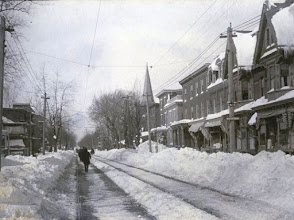Winter '07 / '08 - Place Your Bets
Plenty-o-conventional wisdom underfoot this fall about a moderate-to-strong La Nina holding court over the upcoming winter. There/s even more CW obviously based on multi-event composites about how "warm 'n dry" it/s gonna be for the CONUS east of the much 'wetter' Lucky Ducks in OH / TN River valleys.
Too bad there/s no emoticon for skeptical chin-stroking with deep furrowed brow; otherwise...it might go here. Instead...take a look at the long-term composites for temperature and precipitation...

Temperature.................Precipitation
Mean temperature normal to 1°F above normal and mean precipitation '-2" to normal' extreme southern forecast area to 'normal to +2"' elsewhere.
The La Nina Analogs
The current MEI index 'trend match' has its best fit to '70 / '71...although the subsequent winter was almost over before the -ENSO event became strong. The latest numerical and statistical model output forecast a strong event (le -1.5°C) throughout all of met winter.

Note the highly ranked precipitation area (blue) across the GOM states and greater than median values along the EC and interior NE.
The next best MEI matches occurred prior to the non-Nina winters of '78 / 79 and '59 / '60. That leaves '88 / '89 as this winter/s runner-up MEI analog.

The '88 / '89 analog winter is closer to this year/s CW 'La Nina' winter forecast of 'warm and dry.'

Other Indices and MEI -- BFF or What?
PDO - '70 / '71 was 'warm' during its long-term 'cool' phase. This year/s PDO is 'cool' during a 'warm' phase. No benefits from these friends.
QBO...perhaps? The '70 QBO analog is ranked 5th; however...considering its 'E phase' in '70 / '71 flipped to W in March...two months earlier than the expected change in direction this winter. This flip/s timing could well be important this year b/c the QBO/s E phase is a leading indicator for a -AO and its associated increase in EC cold / storminess through the process of downward wave propagation.
AO...NAO...PNA...EP...and other like indices are thought to have skillful forecast ranges of about two weeks. There could be some utility in LR forecasting with these values if a multi-year trend is present.
The '70 / '71 analog demonstrates the variability of La Nina winters and suggests the coming winter won/t wind up 'warm and dry' in the NE or M-A.





































